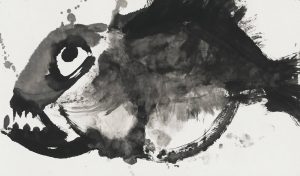
Ink Studio applies several strategies to ensure its growth in commercial activities and promoting traditional Chinese culture.
Can art business sustain itself while reinforcing the core mission of promoting delicate culture? In 2012, three Stanford alumni co-founded Ink Studio, an art gallery focused on Chinese ink painting and calligraphy. Unlike the existing ways that Chinese artworks are being processed and sold, the gallery has several different approaches that eventually lead to its commercial and cultural success.
The business began with differentiating themselves from the art gallery market. Instead of selling a variety of artworks at the same time, Ink Studio chooses to place an emphasis on Chinese ink painting and calligraphy because the three co-founders believe that the above two categories have been widely considered as “the highest form of artistic expression in China for more than 2,000 years”(Smith, 2016). Focusing on only ink painting and calligraphy, the gallery has developed its own features. According to Porter’s generic strategy, the studio is expected to obtain a higher degree of customer loyalty than its competitors.
Besides boiling products down to specific types of artworks, they also differentiate themselves by making sure the artworks are authentic. Britta, the art historian among the co-founders, has a solid experience and 30-year working relationship with the Chinese artists. By directly dealing with the artists, the co-founders believe that there is less chance of selling forgeries.
Next, Ink Studio makes the best use of its customer relationship. Its well-established brand image, such as authenticity and good quality, has addressed glamorous buyers, including Hong Kong’s M+ and New York’s Metropolitan Museum of Art. This in turn makes the artworks sold in the gallery more valuable, and thus increases the revenue of the gallery. The rapid growth in income will further make it possible for the co-founders to focus more on promoting traditional Chinese artwork, which is the core value of the business.
Additionally, the gallery has determined its key resources by identifying themselves as a small business. Though the gallery has been successful now and is invited to some of the most prestigious art fairs in the world, they do not have many stockholders or people that they have an obligation to show their financial report. The co-founders are mainly responsible to only artists, collectors, owners, and themselves. It is this simple structure within a company that they can keep themselves from blurring the overall picture of the business and be less profit-driven, more enthusiasm-oriented.
Conclusively, Ink Studio has outlined several strategies that makes it business successful and holds on to its key values. The successful example of an art business may, in the future, lead to the prosper of art industries.
Word Count: 442
Recent Comments